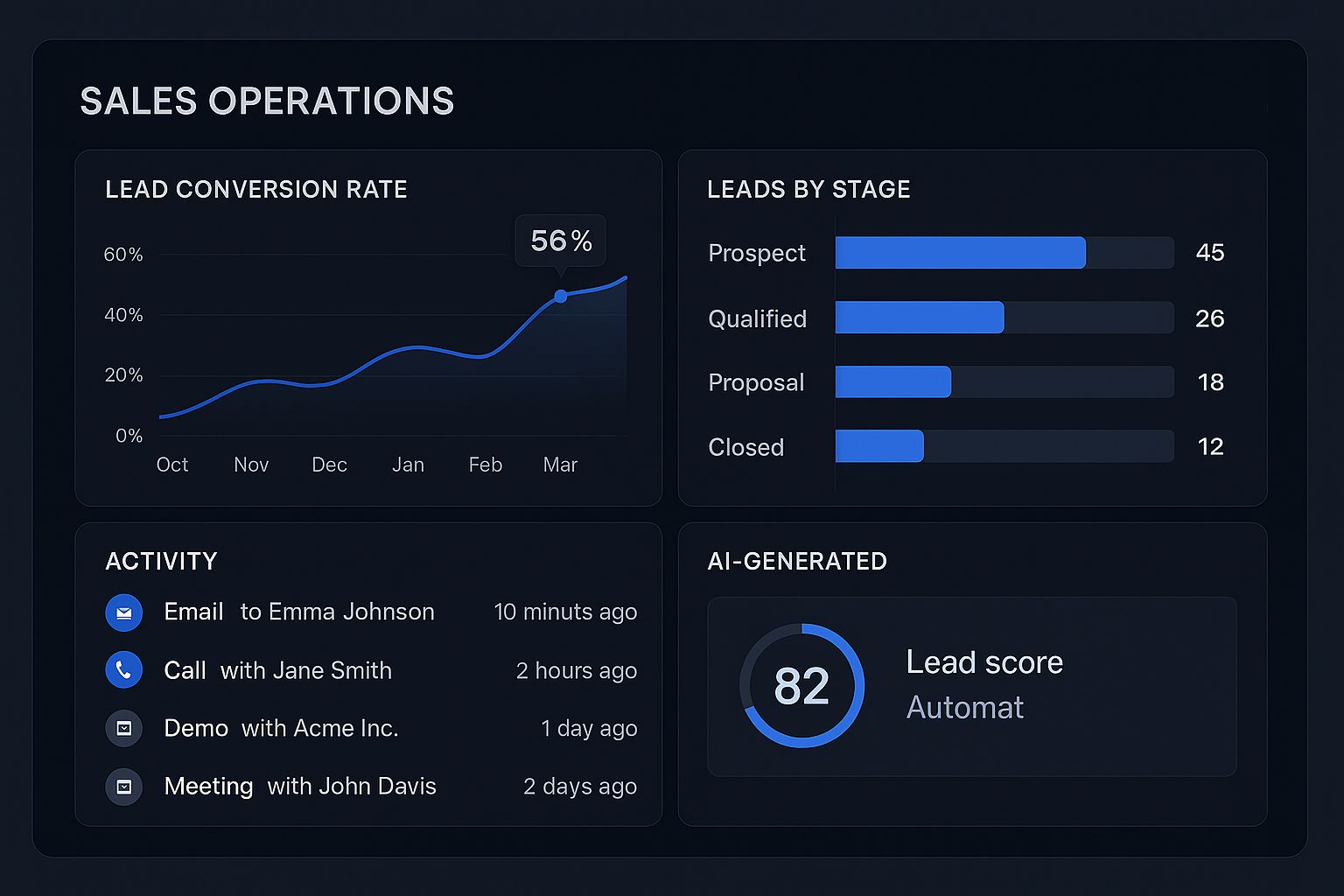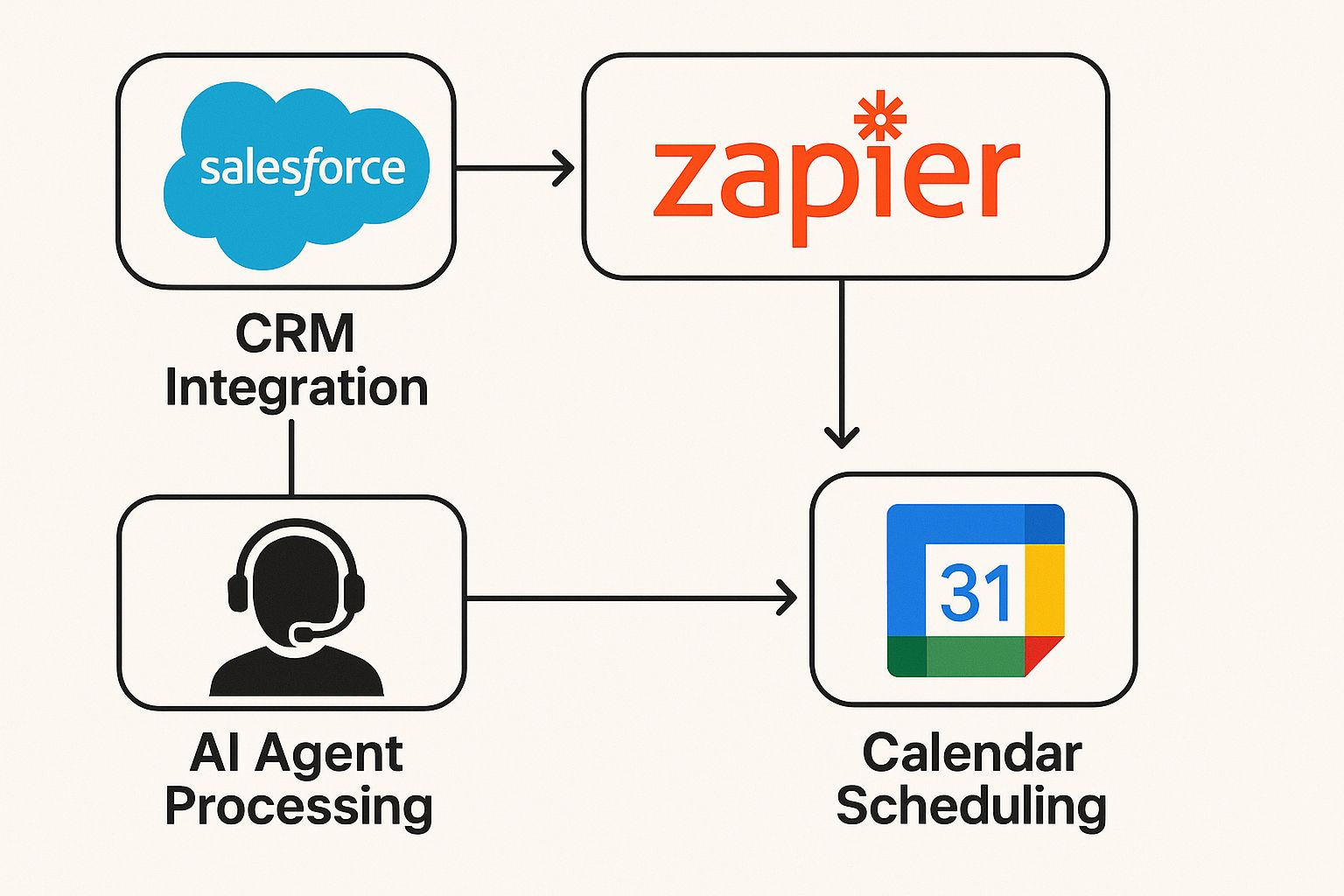A strategic AI sales agent can transform your team’s productivity by automating repetitive tasks, enhancing lead qualification, and ensuring consistent, data-driven outreach. In this guide, I share hands-on insights
Understanding AI Sales Agents and Their Value
AI sales agents are autonomous applications that learn from your CRM and customer data to perform tasks such as email outreach, lead qualification, call scheduling, and real-time coaching all without constant human oversight. Unlike basic workflow automations, these agents leverage machine learning and natural language processing to make decisions, adapt to new data, and execute on behalf of your sales team.
Key Benefits:
- 24/7 Lead Engagement: Never let a hot prospect go cold, even outside business hours.
- Consistency: Standardize follow-up sequences so every lead receives timely, relevant messaging.
- Scalability: Handle high volumes of inbound and outbound prospects without hiring dozens of SDRs.
- Data-Driven Insights: Real-time analytics pinpoint which outreach strategies convert best.

Must-Have Features for High-Impact Sales
When comparing platforms (or open-source GitHub projects), look for these critical capabilities:
1. Automated Lead Qualification & Prioritization Top agents can score incoming leads based on firmographics and engagement signals, routing the hottest opportunities to human reps and nurturing lower-priority contacts until they’re ready to buy.
2. Natural-Language Call & Email Handling Agents should handle complex conversations answering FAQs, overcoming objections, and booking meetings while sounding human enough to maintain trust.
3. Seamless CRM & Calendar Integrations Look for native connectors to Salesforce, HubSpot, Microsoft Dynamics, and popular calendar systems to ensure logged activities and automated meeting scheduling.
4. Real-Time Analytics & Reporting Dashboards should display pipeline impact, response rates, and revenue influence enabling you to iterate quickly on cadences and messaging.
5. Security & Compliance Ensure the agent adheres to GDPR, CCPA, and your industry’s data-protection standards to safeguard customer information.
Pricing Models & Free Trial Strategies
AI sales agent pricing typically falls into three categories:
- Per-Seat Subscription: Fixed monthly fee per active agent or user. Ideal for mid-sized teams but can balloon if your volume grows.
- Usage-Based (Pay-As-You-Go): You pay based on API calls, emails sent, or conversations handled perfect for pilots and unpredictable demand.
- Tiered Plans with Free Trials: Many vendors offer a no-cost tier (e.g., up to 100 contacts or limited features) to test core functionalities before committing.
Tips for Pilot Programs:
- Start with a clear success metric (e.g., 20% increase in qualified leads).
- Use the free tier to validate integration ease and basic automation flows.
- Negotiate enterprise discounts by committing to multi year contracts once ROI is proven.
Deployment & Onboarding: A Step-by-Step Checklist
From my experience, a structured rollout ensures adoption and success:
1. Define Clear Objectives: Align stakeholders on KPIs conversion uplift, response time, or reduced SDR workload.
2. Data Preparation: Cleanse your CRM data and establish mapping for custom fields.
3. Integration Setup: Connect your CRM and calendar systems, then test bi-directional syncing.
4. Pilot Campaign: Launch with a subset of contacts to monitor agent behavior and quality.
5. Train the Team: Conduct workshops demonstrating how agents collaborate with human reps.
6. Iterate & Optimize: Review analytics weekly to refine messaging, adjust scoring thresholds, and expand use cases.
7. Scale: Gradually roll out to full team once core flows are rock-solid.

Measuring ROI: What to Expect
Companies report measurable gains shortly after implementation:
- Conversion Rate Lift: Up to 21% increase by automating lead follow-up and qualification.
- Time Savings: SDRs reclaim 70% of their day, focusing on high-value activities instead of data entry.
- Pipeline Velocity: Faster response times reduce sales cycle length by an average of 30%.
- Customer Satisfaction: Consistent, personalized outreach boosts NPS scores by 7%–20%.
Vendor Comparison: Open-Source vs. Commercial Solutions
| Criterion | Open-Source (GitHub) | Commercial Platforms |
|---|---|---|
| Upfront Cost | Low | Medium to High |
| Feature Set | Core automation | Advanced AI, analytics, support |
| Security & Compliance | Self-managed | Built-in, certified |
| Support & SLAs | Community-driven | Dedicated 24/7 support |
| Scalability | Depends on infrastructure | Guaranteed by vendor |
Insider Tip: If you have in-house dev resources, start with an open-source pilot. Then transition to a managed platform once your use cases solidify and you need enterprise reliability.
Next Steps
Implementing an AI sales agent is a journey beginning with a clear pilot, rigorous data prep, and iterative optimization. Choose a solution that aligns with your technical capabilities, budget, and growth targets. With the right agent in place, your team will spend more time closing deals and less time on manual tasks.
See SuperU handle a real sales call: book a demo.
Start for Free – Create Your First Voice Agent in Minutes


